Output Feedback Adaptive Stabilization of Uncertain Nonholonomic Systems
Abstract
This paper investigates the problem of output feedback adaptive stabilization control design for a class of nonholonomic chained systems with uncertainties, involving virtual control coefficients, unknown nonlinear parameters, and unknown time delays. The objective is to design a robust nonlinear output-feedback switching controller, which can guarantee the stabilization of the closed loop systems. An observer and an estimator are employed for states and parameters estimates, respectively. A constructive controller design procedure is proposed by applying input-state scaling transformation, parameter separation technique, and backstepping recursive approach. Simulation results are provided to show the effectiveness of the proposed method.
1. Introduction
The control and feedback stabilization problems of nonholonomic systems have been widely studied by many researchers. It is well known that control of nonholonomic systems is extremely challenging, largely due to the impossibility of asymptotically stabilizing nonholonomic systems via smooth time-invariant state feedback, a well-recognized fact pointed out in [1, 2]. In order to overcome this obstruction, a number of approaches have been proposed for the problem, which mainly include discontinuous feedback, time-varying feedback, and hybrid stabilization. The discontinuous feedback stabilization was first proposed by [3], and then further discussion was made in [4–7]; especially an elegant discontinuous coordinate transformation approach is proposed in [5] for the stabilization problem of nonholonomic systems. Meanwhile, the smooth time-varying feedback control strategies also have drawn much attention [8–11].
As pointed out in [9], many nonlinear mechanical systems with nonholonomic constraints can be transformed, either locally or globally, to the nonholonomic systems in the so-called chained form. So far, there have been a number of controller design approaches [8–25] for such chained nonholonomic systems. Recently, adaptive control strategies have been proposed to stabilize the nonholonomic systems. For instance, the problem of adaptive state-feedback control is studied in [15–19], while output feedback controller design in [20–24]. Considering the actual modeling perspective, time delay should be taken into account. The problem of state feedback stabilization is studied for the delayed nonholonomic systems in [25, 26]. However, the virtual control coefficients and unknown parameter vector are not considered in its system models. Here, an iterative controller design method will be proposed for the output feedback adaptive stabilization of the concerned delayed nonholomic systems.
In this paper, we study a class of chained nonholonomic systems with strong nonlinear drifts, and the problem of adaptive output-feedback stabilization for the concerned nonholonomic systems is investigated. The constructive design method proposed in this note is based on a combined application of the input scaling technique, the backstepping recursive approach, and the novel Lyapunov-Krasovskii functionals. The switching control strategy for the first subsystem is employed to achieve the asymptotic stabilization.
The rest of this paper is organized as follows. In Section 2, the problem formulation and some preliminary knowledge are given. Section 3 presents the controller design procedure and stability analysis. Section 4 gives the switching control strategy. In Section 5, numerical simulations testify to the effectiveness of the proposed method, and Section 6 summarizes the paper.
2. Problem Formulation and Preliminaries
In this paper, we make the following assumptions on the virtual control directions di and nonlinear functions φi, ϕi in system (1).
Assumption 1. d0 is a known constant and the sign of is known, where .
Assumption 2. There exist known smooth nonnegative functions and such that
Assumption 3. For every 1 ≤ i ≤ n, the nonlinear function φi satisfies inequality
Remark 4. Compared with some existing literatures in recent years, the structure of our concerned system (1) is more general. For instance, in [15], it is assumed that not only the virtual control directions di = 1 and the dynamics ϕi satisfy , but also the modeled dynamics φi do not exist. In [22], the virtual control coefficients and time delays have not been considered, and the expression is also required. While di = 1 and φi and unknown parameters θ are not existent, system (1) degenerates to the one studied in [21]. When φi = 0, together with , system (1) becomes the considered system in [23].
Remark 5. Note that here we only use the sign of without any knowledge of individual virtual control direction di (1 ≤ i ≤ n). Moreover, Assumptions 2 and 3 are imposed on the nonlinear functions ϕi and φi, respectively. In fact, if the modeled dynamics φi do not involve time delays, inequality (3) is reduced into
Lemma 6 (see [27].)For any real-valued continuous function f(x, y), where x ∈ Rn, y ∈ Rm, there are smooth functions a(x) ≥ 0, b(y) ≥ 0, c(x) ≥ 1, d(y) ≥ 1 such that
Lemma 7 (see [19].)For any continuous function μ0(t) there exist two strictly positive real numerates pmin and pmax such that the unique solution P(t) of the following matrix differential equation:
3. Output Feedback Adaptive Stabilization Control Design
In this paper, we design control laws u0(t) and u1(t) separately to globally asymptotically stabilize the system (1). According to the structure of system (1), we can see that when x0(t) converges to zero, xi(t) (1 ≤ i ≤ n) will be uncontrollable. A widely used method to design control law u1(t) is to introduce a discontinuous input scaling transformation (12). On the other hand, the control directions di are unknown; then we should employ another coordinate transformation to overcome the obstacle.
3.1. State Coordinate Transformation
In order to obtain the estimation for the nonlinear functions Ψi and Φi, the following lemmas are given.
Lemma 8. For every 1 ≤ i ≤ n, there exists smooth nonnegative function such that
Lemma 9. For every 1 ≤ i ≤ n, there exist smooth nonnegative functions such that
3.2. Observer Design
3.3. Control Design
In this section, the intergrator backstepping approach will be used to design the control laws u0(t) and u1(t) subject to x0(t0) ≠ 0. The case that the initial condition x0(t0) = 0 will be treated in Section 4.
Remark 11. From (26), we know that β is a constant and is a function with respect to x0(t). Moreover, we can conclude that is smooth because is a nonnegative smooth function.
Denote A1 = A0 − KC − Lβ; we can choose appropriate design parameters ki (1 ≤ i ≤ n) such that A1 is Hurwitz. Then there exists a positive definite matrix Q satisfying , and μ is a positive constant.
Step i (4 ≤ i ≤ n). Assume that, at Step i−1, a virtual control function αi−1, a tuning function πi−1, and a Lyapunov functional Vi−1 have been designed in such a way that
At the last step (i = n), the true input u1(t) will be designed on the basis of the virtual control and the Lyapunov function Vn−1 introduced before.
3.4. Stability Analysis
It can be seen that are bounded. Since θ and di are unknown bounded parameters, are bounded. According to estimator equations (19)–(21), it can be deduced that the boundedness of z1(t) = η1(t) guarantees the boundedness of ξ0(t), and then and α1 are also bounded. By similar analysis, we can conclude that all signals of the closed loop system are bounded.
By LaSalle invariant Theorem, it further achieves that as t → ∞. By the controller design procedure, we get that ξ0(t), υ(t), αi, u1(t) asymptotically tend to zero. Then, the definitions and show the asymptotical convergence of and z(t). Finally, from the transformations (10) and (12), we know , which indicates that the states xi(t) asymptotically converge to zero with the initial condition x0(t0) ≠ 0.
Since x0(t), x1(t), u0(t) and the system parameters are all bounded, then in (63) are also bounded. Employing the convergence of x0(t), z1(t), u1(t), we can get that z(t)-system is globally asymptotically convergent. From the introduced transformations before, it can be deduced that system (1) is also asymptotically convergent. Now, we can express the following theorem.
Theorem 12. For system (1), under Assumptions 1–3, if the control strategies (23) and (58) are applied with an appropriate choice of the design parameters, the global asymptotic stabilization of the closed loop system is achieved for x0(t0) ≠ 0.
In the next section, we will deal with the stability analysis of the closed loop as long as the initial condition x0(t0) is zero.
4. Switching Controller
Obviously, x0(t) is increasing when . When , choose the controller , and the controller u1(t) can be designed according to the simple nonlinear backstepping iterative approach. Since |x0(t)| > ϱ3, at ts, we switch the control laws u0(t) and u1(t) into (23) and (58), respectively.
5. Simulation Example
For simulation use, we pick the unknown parameters d1 = 1.5, d2 = 2.5, θ1 = θ2 = 0.5. In addition, we take the other controller design parameters as c0 = 1, c1 = 130, c2 = 2, k1 = 4, k2 = 1, ℓ1 = 2, ℓ2 = 3, δ1 = δ2 = 4. Moreover, The initial state condition is [0.2, 0, − 0.1] T. Simulation results are shown in Figures 1, 2, 3, and 4. It is obvious that the states x0(t), x1(t), x2(t) and control input u0(t), u1(t) converge to zero, and the parameters estimation invariable tend to constants.

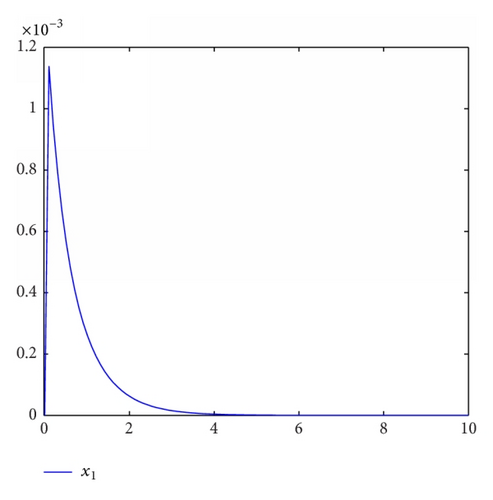
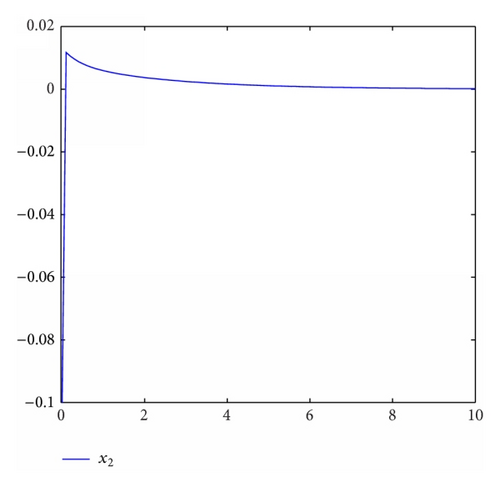

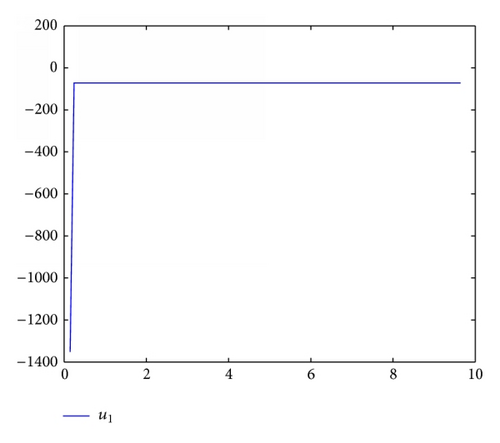
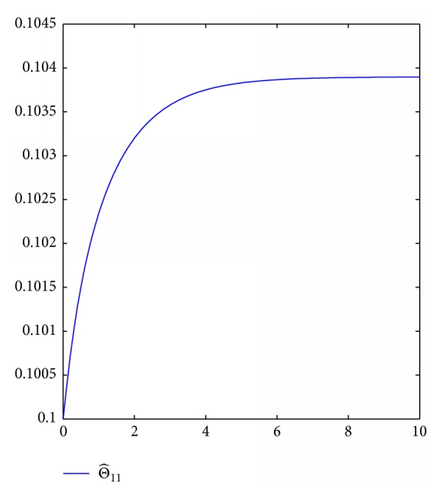
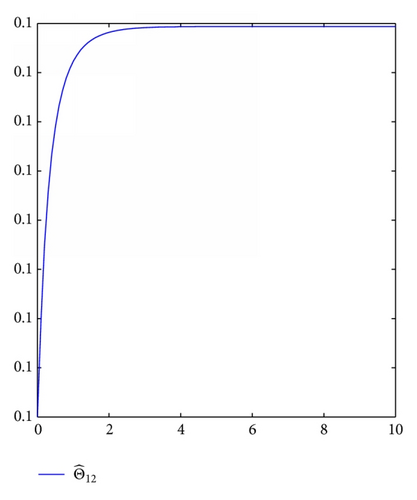
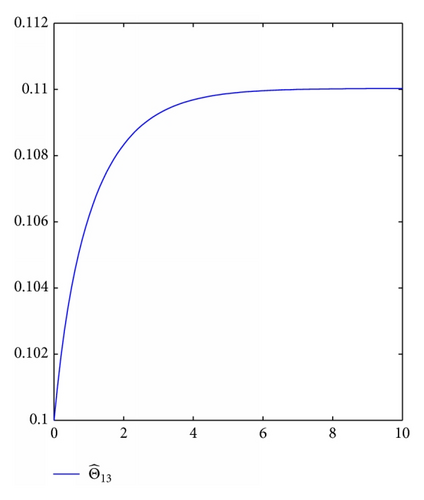
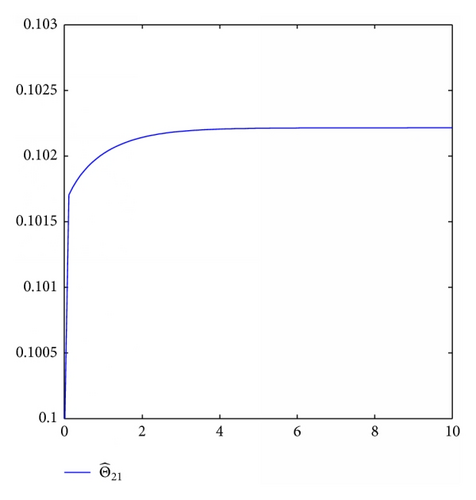
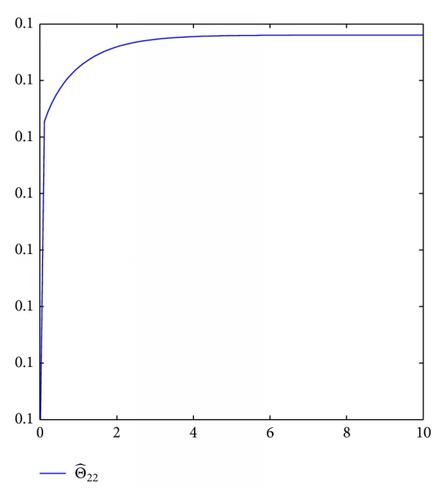
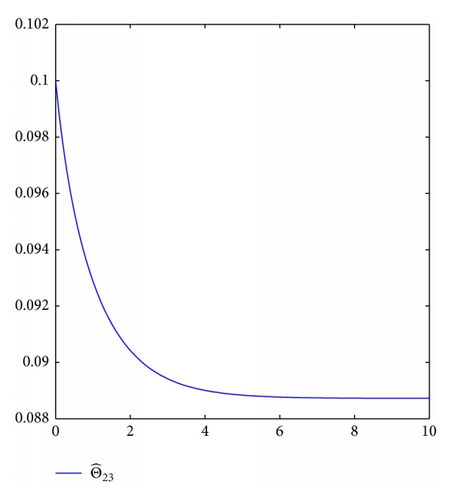
6. Conclusion
The output-feedback adaptive stabilization was investigated for a class of nonholonomic systems with unknown virtual control coefficients, nonlinear uncertainties, and unknown time delays. In order to overcome the difficulties, we introduce suitable transformation and novel Lyapunov-Krasovskii functionals, and then a recursive technique is given to design the adaptive controller. To make the input-state scaling transformation effective, the switching control strategy is employed to achieve the asymptotic stabilization.
Conflict of Interests
The authors declare that there is no conflict of interests regarding the publishing of this paper.
Acknowledgments
This work is partially supported by National Natural Science Foundation (U1304620,61273091,61374079), Basic and Frontier Technologies Research Program of Henan Province (122300410279), and Doctoral Fund of Zhengzhou University of Light Industry (201BSJJ006).




